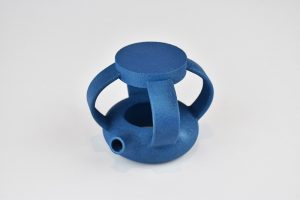What is a gripper ?
Grippers are devices enabling robots to pick up and hold objects. Combined with a collaborative and industrial robot arm, these devices allow manufacturers to automate some processes, such as inspection, assembly, pick and place, and machine tending. There are numerous types of grippers developed: vacuum grippers, pneumatic grippers, hydraulic grippers, electric grippers, etc.
Grippers are the physical interface between a robot arm and the workpiece. Choosing the correct type of gripper is essential since the device comes in direct contact with your product. Manufacturers select grippers based on which handling application they require and the kind of material in use.

Manufacturing grippers: What are the main challenges?
These devices are gripping, rotating, connecting, and have to be adaptable to the machine. Grippers are complex, made of many different parts articulated together. In most cases, grippers have to be light while still robust, reliable, and capable of moving the required loads.
Lightweight and integration are the significant challenges of gripper manufacturing; these parts have to be efficient and move as quickly as possible. How can your gripping system support faster movements and shorter cycle times while maintaining the same load capacity?
Speed up packaging line, benefit from a high level of adaptability by implementing 3D printing to manufacture your grippers.



 Connect with Google
Connect with Google Connect with Facebook
Connect with Facebook




